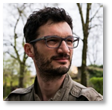 |  |
This is a short course on Smoothed Particle Hydrodynamics (SPH) numerical schemes that will cover basic and theoretical concepts, as well as latest innovations. This course is primarily aimed at a beginner level for those with a Masters and/or a PhD degree in mathematics, engineering, computer science, physics, environmental disciplines, astrophysics or biomedicine, amongst others. The contents will also be of interest to post-doctoral researchers in academia and industry, as well as to academics and SPH practitioners.
The course will combine lectures on the fundamental theoretical formalism, numerical methods and practical implementation techniques. It will also include a PC-based laboratory using the open-source code DualSPHysics on the final day. DualSPHysics an international collaboration between five institutions: The University of Manchester (UK), The University of Vigo (Spain), Universitat Politècnica de Catalunya (Spain), University of Lisbon (Portugal), the University of Parma (Italy), and New Jersey Institute of Technology (United States): http://www.dual.sphysics.org
The SPH method
Developed originally for astrophysics, Smoothed Particle Hydrodynamics (SPH) has seen a rapid development in the last decade with application to engineering problems for both fluids and solids. The meshless and Lagrangian nature of SPH makes it ideal for applications where there are very large deformations with arbitrarily complex moving boundaries and fragmentation. The method has received considerable interest from the industry for solving a range of complex problems where conventional Computational Fluid Dynamics (CFD) methods and Computational Mechanics have great difficulties.
Venue
The course will be taught in hybrid format (both in presence and online) although in-presence is preferred. A link will be provided to people registered to attend the online classes. The in-presence classes will take place at Centro Congressi S. Elisabetta, (Parco Area delle Scienze 95, University of Parma, Italy).
How to get here:
BY CAR (A1 Motorway):
Exit at the PARMA toll booth and keep to the right, following the signs for “Tangenziale – SS 9 Via Emilia”. After about 2 km, take the right exit for the western bypass (Tangenziale Ovest), following signs for Piacenza-Langhirano or Milano. After about 4 km, take the right exit toward exits 10-19 and continue on the southern bypass (Tangenziale Sud) for about 7 km, following the signs for Langhirano and the University (“U”). Leave the bypass at exit 15; at the next roundabout, take the right-hand road marked for Campus, pass through the gates, and turn right.
BY BUS:
The bus lines that stop near the Santa Elisabetta Conference Center are 7 and 21 (http://www.tep.pr.it/). The closest bus stops to the Santa Elisabetta Conference Center are:
Università Ingegneria (248 meters away, 4-minute walk), Università CUS (306 meters away, 5-minute walk), Università Fisica (562 meters away, 8-minute walk)
Contact person
Renato Vacondio, renato.vacondio@unipr.it
Dates
10/02/2026 – 18/02/2026
Week 1
| Date and time | subject |
| 10/02/2026 9:00 – 12:00 CET, (8:00 – 11:00 UTC) | Intro to the course, fundamentals of meshless spatial interpolations (SPH, Moving Least Square, etc…) |
| 11/02/2026 9:00 – 12:00 CET, (8:00 – 11:00 UTC) | Consistency of SPH interpolation |
| 11/02/2026 14:00 – 15:30 CET (13:00 – 14:30 UTC) | Tutorials |
| 12/02/2026 9:00 – 12:00 CET, (8:00 – 11:00 UTC) | SPH discretization of continuity and Euler equations for compressible/incompressible fluids part 1 |
| 12/02/2026 14:00 – 15:30 CET (13:00 – 14:30 UTC) | Tutorials |
| 13/02/2026 9:00 – 12:00 CET, (8:00 – 11:00 UTC) | SPH discretization of continuity and Euler equations for compressible/incompressible fluids part 2 |
| 13/02/2026 14:00 – 15:30 CET (13:00 – 14:30 UTC) | Tutorials |
Week 2
| Date and time | subject |
| 16/02/2026 9:00 – 12:00 CET, (8:00 – 11:00 UTC) | SPH boundary conditions, variable time step, density issues, ALE-SPH formulation |
| 16/02/2026 14:00 – 15:30 CET, (13:00 – 14:30 UTC) | Tutorials |
| 17/02/2026 9:00 – 12:00 CET, (8:00 – 11:00 UTC) | Exam sheet, DualSPHysics hands on session and Q&A 30 |
Final exam
An exam sheet will be delivered on the final day of the course (18/02/2026) and it must be returned by email to: renato.vacondio@unipr.it by the 19/02/2026 at 12:00 CET. Certificate of attendance (with the indication of 4 ECTS credits) will be prepared upon request, only for attendees which will pass the final exam.
Tutorials
Tutorial exercises will be provided at the end of each day according to the table above with worked examples demonstrated in the following afternoon using Matlab.
You can register here:
The Registration is free of charge.
Course Lecturer:
 | Prof. Renato Vacondio is an Associate Professor at the University of Parma. He obtained his PhD from the University of Parma in Italy on SPH developing a new methodology for solving shallow water flows. He published several papers on SPH mainly focused on fundamentals of SPH schemes with special focus on variable resolutions, boundaries, and stability. He is one of the main developers of the DualSPHysics opensource code as well as Chair (2021-2026) of the Smoothed Particle Hydrodynamics rEsearch and engineeRing International Community (SPHERIC), the international organization representing developers, users and researchers of SPH. . |
 | Dr Aaron English is a Post-doctoral researcher at the University of Parma. He obtained his PhD in Mechanical Engineering from the University of Manchester in 2020 on “Design of Low Residue Packs by Smoothed Particle Hydrodynamics”. His work focusses on the implementation of accurate and robust boundary conditions in SPH as well as the development of new complex physics such as porous media and turbulence models. He is a developer of the open-source SPH solver DualSPHysics and maintainer for the boundary conditions. |


